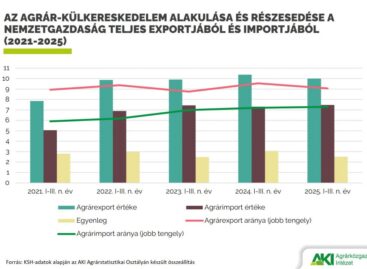Good start of the year, but uncertainty follows

Attila Udvardi
head of research
GKI
Various international growth forecasts predict a slowdown in the European Union in 2019. As for Hungary, a 3.5-percent GDP growth is likely after last year’s plus 4.9 percent. In the first two months of the year Hungarian industrial production increased by 5.2 percent and retail sales were up 6.9 percent. EU transfers will continue to grow this year, but they will only entail an investment growth of approximately 7 percent.
The gross wage increase slowly but steadily kept getting smaller last year, while the inflation rate was growing, so real wage growth reduced to 8 percent in 2018; for this year a 5.5-6 percent dynamics is expected. While the consumption growth was 4.6 percent last year, 2019 will only bring a 4-percent rate in this respect.
At the beginning of the year 80,000 more people were working in Hungary than 12 months earlier. The 3.6-percent unemployment rate was lower than the EU’s average. However, the Hungarian inflation rate was one of the highest in the EU, and core inflation reached 3.8 percent by March. If prices keep rising and the forint will continue to weaken, by the end of the year the Central Bank of Hungary (MNB) can increase the base rate by 1-1.15 percent. //
Related news
Agricultural foreign trade surplus decreased in the first three quarters of 2025
🎧 Hallgasd a cikket: Lejátszás Szünet Folytatás Leállítás Nyelv: Auto…
Read more >Perceived price increase index remains high
🎧 Hallgasd a cikket: Lejátszás Szünet Folytatás Leállítás Nyelv: Auto…
Read more >The GKI business climate index closed 2025 at a one and a half year high
🎧 Hallgasd a cikket: Lejátszás Szünet Folytatás Leállítás Nyelv: Auto…
Read more >Related news
Christmas shock in commerce: for the first time, we can pay with bank cards in fewer places
🎧 Hallgasd a cikket: Lejátszás Szünet Folytatás Leállítás Nyelv: Auto…
Read more >Hungarian Confectionery Manufacturers Association: trends in 2025 and prospects for 2026
🎧 Hallgasd a cikket: Lejátszás Szünet Folytatás Leállítás Nyelv: Auto…
Read more >Most grocery chains will be open until noon on December 24th
🎧 Hallgasd a cikket: Lejátszás Szünet Folytatás Leállítás Nyelv: Auto…
Read more >






